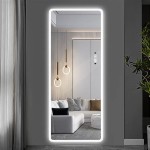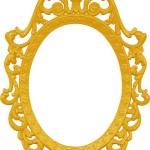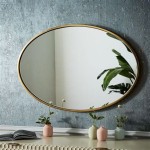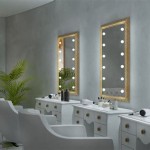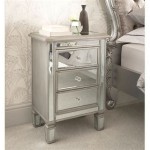How To Make A Distressed Mirror Frame In Revit
Creating a distressed mirror frame in Revit involves a combination of modeling techniques and material application to achieve the desired aged and textured aesthetic. This article outlines a detailed process for constructing such a frame, focusing on parameterization and material customization for a realistic final appearance. The process will involve creating a profile family for the frame, loading it into a project, and employing sweeps and other modeling tools to add details and distress. Material customization is a crucial aspect, using Revit's material editor to simulate aged wood, chipped paint, and other features associated with distressed furniture.
The initial step involves setting up the project environment and understanding the scope of the task. The complexity of the distressed effect desired will dictate the level of detail needed in the Revit model. It is often beneficial to gather reference images of real distressed mirror frames for inspiration and to analyze the types of imperfections and textures that contribute to the overall appearance.
Creating the Frame Profile Family
The foundation of the mirror frame is a custom profile. This profile will define the shape and dimensions of the frame's cross-section. To create this, start a new family using the "Metric Profile.rft" template (or the imperial equivalent). This template provides a pre-defined coordinate system that will be used to accurately position the profile when it's swept along a path in the main project. The profile needs to be drawn accurately to reflect the desired style and can be relatively simple or ornately detailed depending on the design.
Within the profile family, use the line tools to draw the shape of the frame. Consider features such as bevels, curves, and recesses when designing the profile. These details will contribute to the overall visual interest of the distressed frame. Dimensions should be applied to the sketch lines to ensure accuracy and to allow for parameterization. Parameterization allows the profile's dimensions to be controlled from within the main project, making it easier to adjust the frame size without having to edit the family directly.
To add parameters, select a dimension and choose the "Label" option on the ribbon. Create new parameters for dimensions like the frame's width, thickness, and any specific features of the profile (e.g., bevel depth). Ensure these parameters are set as "Type" parameters if the intention is to have different frame sizes as separate types within the project. Save the profile family with a descriptive name, such as "DistressedMirrorFrame_Profile."
Building the Frame in the Project Environment
With the profile family created and saved, the next step is to incorporate it into the main Revit project. Begin by creating a new project using a suitable template, such as the "Architectural Template." Alternatively, the frame can be added to an existing project. The project should contain a wall or other surface to which the mirror and frame will be attached. In the project environment, load the "DistressedMirrorFrame_Profile" family that was previously created into the project.
To create the frame, utilize the "Sweep" tool under the "Model In-Place" component. Choose a category that is appropriate for the frame, such as "Furniture" or "Casework." Give the in-place family a descriptive name, such as "DistressedMirrorFrame." The sweep tool requires a path and a profile. First, define the path. This can be done by sketching a rectangle on the wall surface. The rectangle should represent the overall size and shape of the mirror frame. Ensure the path is closed and connected to form a continuous loop.
Once the path is defined, select the "Select Profile" option and choose the "DistressedMirrorFrame_Profile" from the list of loaded profiles. Position the profile correctly along the path to ensure the frame sits flush against the wall. If the profile is not oriented correctly, use the "Flip" and "Angle" options within the sweep tool to adjust its position. Finalize the sweep to create the basic frame geometry. Adjustments to the profile's dimensions can be made through the type properties of the in-place family to fit the desired mirror size.
Adding Distress and Detail with Modeling and Material Application
Achieving a distressed look requires more than just a basic frame geometry. Additional modeling techniques and material customization are necessary to simulate the effects of aging and wear. These techniques involve adding imperfections, textures, and color variations to the frame's surface.
To create imperfections, use the "Void Forms" tools to carve out small sections of the frame. This can be done with void extrusions, void sweeps, or void blends. Scatter these voids randomly across the frame surface to simulate chips, scratches, and dents. The size and shape of the voids should vary to create a more natural and random appearance. Consider adding slight bevels to the edges of the voids to soften the transitions and make them look more realistic.
To simulate the appearance of worn paint, apply a multi-layered material to the frame. First, create a base material that represents the underlying wood. This material should have a realistic wood texture and color. Next, create a second material that represents the top layer of paint. Choose a color and finish that is appropriate for distressed furniture. In the material editor, use a bump map to add subtle texture to the paint layer, as well as an opacity map to make the paint layer appear worn and aged. The opacity map can be a grayscale image with varying levels of transparency that mimic chipped and faded paint. Apply the paint material to the frame and adjust the mapping settings to ensure the texture is properly aligned and scaled.
Experiment with different combinations of materials and textures to achieve the desired distressed look. Consider adding details such as simulated nail holes or wormholes using small void extrusions. Adding a slight bevel to the frame's edges can also enhance the realism by creating subtle highlights and shadows. Parameterize the materials settings to allow for easy adjustment of the frame's appearance without having to edit the material directly.
Another critical aspect is the mirror itself. Create a simple rectangular extrusion within the frame opening and apply a mirror material to the surface. Revit's built-in mirror material provides a realistic reflection effect. Adjust the reflectivity and glossiness settings of the material to fine-tune the mirror's appearance.
Finally, adjusting project lighting and shadow settings can improve the visual impact of the distressed mirror frame. Experiment with different lighting schemes to highlight the textures and imperfections of the frame. Shadows can accentuate the depth and dimension of the details, creating a more realistic and visually appealing rendering. Consider using realistic rendering settings to showcase the texture and imperfections of the distressed frame effectively.

How Do You Distress A Gold Mirror Frame Hometalk

Diy Framed Mirror Jaime Costiglio

Tutorial Create The Weathered Wood Look With Paint Transform A Mirror

How To Paint A Mirror Frame Gold Remodelando La Casa

How To Cheat A Distressed Look Confessions Of Serial Do It Yourselfer

Rustic Reflections Simple Mirror Frame With A Weathered Look Canadian Woodworking

How To Frame A Mirror Sand And Sisal

19 X 30 Hollowday Wood Framed Arched Wall Mirror With Shelf White Kate Laurel All Things Decor Target

How To Paint A Mirror Frame The Easy Way By Just Woods

Italian Carved Rope Framed Mirror For At 1stdibs


